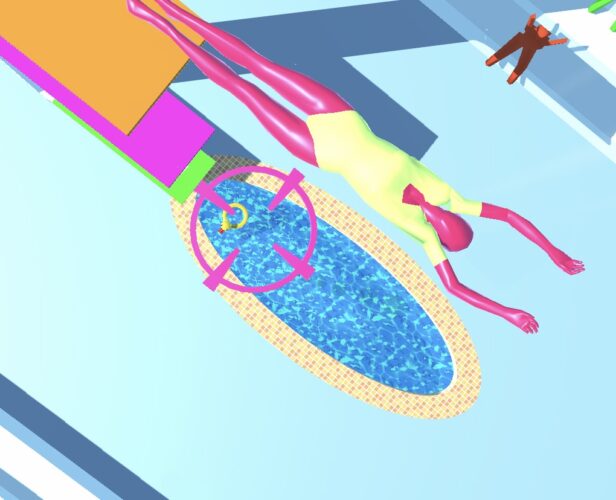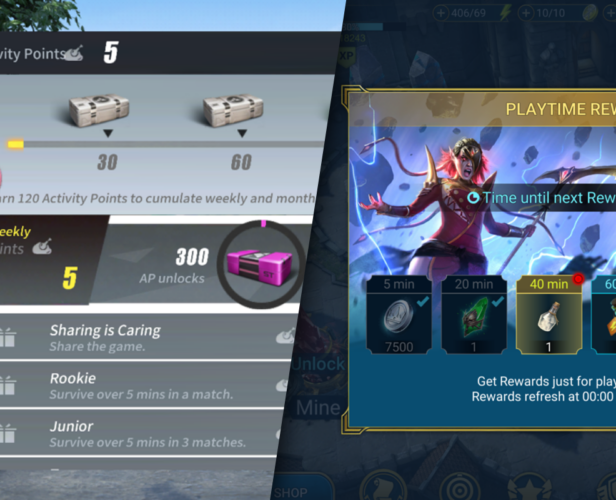Category
Mechanics & Features
#Game Deconstructions
Prototype Phases For A Hit Casual Game – Purple Diver
Here at Voodoo Games we recently launched Purple Diver, which we developed with Viatcheslav Tarasov (the developer behind Ragdoll Archer, Truck Traffic Control, and Snake Loves numbers). And we’re pleased to say it quickly jumped to the top of the charts, now having around 15M downloads worldwide. So in this post, we’re going to talk you through how the game came into being and what we learned from making it. (If you’re new to hyper-casual games, make sure to check out our 3 snackability tips for making hit games). Why we love Purple Diver For us, one of the best things about Purple Diver is its monetization potential – in a game like this we can show a lot of ads. We know this can be irritating for some players, but we think the nature of the game and the...
#Ads & Monetization
How Esports Can Help Your Mobile Game Make Money
This post was originally written by Brian Mahoney, Director of Game Design at Skillz. You can read it here. Picture this – your mobile game is doing well. You have really high player engagement, and your retention is looking strong. All in all, your game is bringing in a steady stream of money, so you’re happy. However, you start to see a drop in your acquisition strategy. And on top of that, you need to keep making iterations and changes to your game to avoid losing your most highly-engaged players (the ones who expect more and more content). So, what do you do? This scenario is all too familiar amongst some of the mid-to-larger sized gaming studios. One of the biggest challenges developers face today (which I’m sure all of you can agree with) is competing in a market where...
#Game Deconstructions
Homa Games Spotlight – Taking Your Game From Good To Great
After the launch of one of their biggest games, I spoke with Vincent Hart de Keating, Co-Founder & Managing Director of Homa Games, to learn how they improved their now biggest hit, Tiny Cars, and key lessons they learned on the way. Thanks for chatting with us today. Before we get started, can you give us a bit of background on Homa? What do you guys do? Sure thing. At Homa Games, we consider ourselves experts when it comes to mobile game publishing, especially within the hyper-casual space. We actually only started about a year ago (mid-2018) as a fairly small team. But in the space of just a few months, our team grew, with new members in game design, data analysis, motion design, and mobile development (making the ultimate A-team for publishing). Since then, we’ve managed to publish over...
#Live Ops
Appointment Mechanics – How to Keep Your Players in Game
Editor’s Note: this post was originally published by Kalle Heikkinen, Chief Game Analyst at GameRefinery. With over 400 games analyzed under his belt, Kalle has a solid understanding of what works and what doesn’t in the mobile game market. We all know how important and challenging it’s to not only create and expand your player base but also to retain it. Some games re-engage their players by facilitating communal systems, such as guilds to enforce social commitments to the game. Others use exclusive limited-time events and content to instigate FOMO among players. Then there are games that rely on publishing more and more content, levels, and story to give their players a reason to come back. Our good friends at GameRefinery offer data and actionable insights on all of the ways mentioned above to boost retention. But in this blog post, they...
#Data & Analytics
Genres, Brands and Features: All You Need to Know About the Chinese Mobile Games Market
Editor’s Note: this post was originally published by Kalle Heikkinen, Chief Game Analyst at GameRefinery. With over 400 games analyzed under his belt, Kalle has a solid understanding of what works and what doesn’t in the mobile game market. 800 million mobile internet users, 550 million mobile gamers, 18 billion dollars of annual revenues – the Chinese mobile games market is like no other; attractive and unignorable. The market is a minefield of challenges as well though. From finding the right publishing partner to adjusting to the quirks of the Chinese government (we all remember what happened with approving new game licenses last year). With that said, it is more important than ever to know what the landscape of the world’s biggest mobile games market looks like. In this blog post, our friends at GameRefinery make an attempt to chart it in terms of:...
#Game Deconstructions
Deconstructing Meta Features In Social Casino Games (With Examples)
Why study social casino games? There’s a huge amount that any developer can learn from social casino games. The casino genre has some of the most avid and engaged types of players, and developers have therefore built many sophisticated meta game features in order to support the success of these types of titles This means you can find a much greater array of unique rewards, challenges or even enhanced purchasing options that provide an important distinction and added value to the players that dedicate a lot of their time to these types of games. People don’t play for real money here, so these features are crucial in order to keep them engaged. So, that’s why we’ve written this post – to showcase some of the most innovative ways to complement your core game and keep your players engaged. We look...
#Mechanics & Features
Match3 Games – Meta Layers And Matching Types
Editor’s Note: this post was originally published by Erno Kiiski, Chief Game Analyst at GameRefinery. In his job, he’s played and analyzed hundreds of titles on a feature level, giving him a strong sense of the current mobile game market. Match3 puzzle is and has always been one of the top genres in mobile gaming – especially in western markets. The simple yet addictive Match3 mechanics appeal to a wide range of players and for many of them, crushing candies and popping bubbles are the first steps into the world of mobile gaming. Being “in the top” can, of course, be defined in various ways, but when it comes to Match3 games, they tick all the boxes. For instance, when looking at IAP revenues generated during the past quarters, the Match3 genre beats its competitors quite clearly in the US:...
#Game Design
Designing Habit-Forming Games
We are all creatures of habit, whether we like it or not. Not every habit is bad – especially when you’re a developer who’s got players that make your game a regular habit or part of their everyday activities. After all, a player who gets used to playing your game will keep coming back to it, and that’s the key to forming a steady community of players in the long run. [bctt tweet=”A player who gets used to playing your game habitually will keep coming back, and that’s the key to forming a steady community. Read more:” username=”GameAnalytics”] Repeat Customers Are The Best Customers This is the case in nearly every business, but especially true in gaming. After all, most users aren’t going to finish any game in a single session (and if they can, is that really the right...
#Marketing & Publishing
Mid-Core Success Part 3: Social
In part three of his Mid-Core Success series, Michail Katkoff talks about true social mechanics, the kind that add to the gameplay, improve overall player experience and make the game feel more alive.
#Ads & Monetization
From Paid to Free(mium) in Three Steps
In this latest post, Michail Katkoff delves deeper into the realm of freemium and walks you through the process of assessing the profitability of switching an existing game from paid to freemium.
#Mechanics & Features
Feature Selection and the Law of Diminishing Returns
A problem that recurrently mentioned during the recent Data Science Day in Berlin is feature selection: given the array of possible variables/features to track from a digital game, which of these should we track? The solution I heard mentioned most often was: track everything, analyze everything. However, this approach is not without its problems, notably in terms of the resources it requires to analyze everything. Another thing to consider is the law of diminishing returns.










